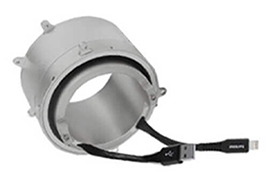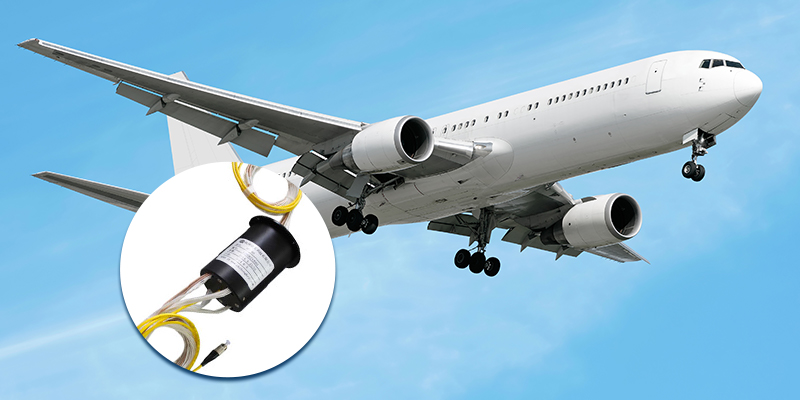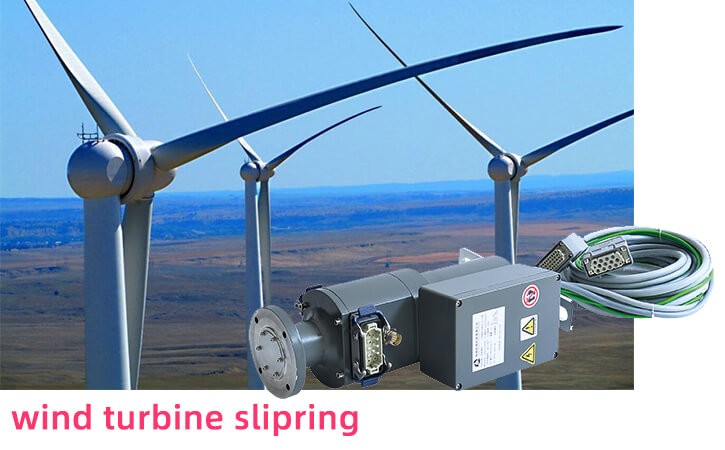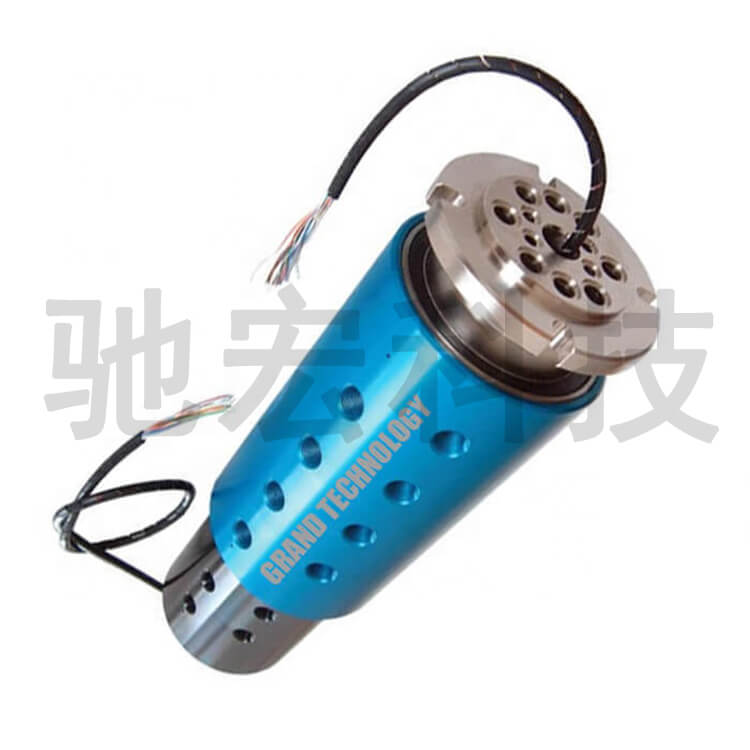Slip rings play a pivotal role in electro-mechanical systems requiring the transmission of power and electrical signals from a stationary structure to a rotating one. Among the variety of materials used for slip rings, aluminum has recently gained significant attention. The essence of this section is to provide a brief insight into aluminum slip rings, establish their importance in varied industries, and decipher the reasons behind their widespread adoption.
Understanding Aluminum Slip Rings
Aluminum slip rings are advanced electro-mechanical devices made up of aluminum-based conductive rings and brushes. Their primary task is to ensure a constant, uninterrupted electrical connection while components rotate in machinery. Much of their operational functionality is similar to any standard slip ring; however, the incorporation of aluminum as the core material gives them unique advantages, contributing to their extensive utility.
The Crucial Role of Slip Rings in Various Industries
Slip rings, including those composed of aluminum, hold substantial importance across different industries. Their fundamental use spans a wide variety of sectors, such as defense, aerospace, renewable energy, medical technology, and industrial automation. They are instrumental in maintaining seamless electrical connections in systems that involve rotation and motion, where conventional methods of connection are impractical.
In the wind energy sector, for example, slip rings are essential in transmitting power and data from the non-rotating part (tower) to the rotating part (nacelle and blades) of wind turbines. Also, in medical imaging systems such as CT scanners, slip rings are critical for transferring real-time data without interruption.
Growing Popularity of Aluminum as Choice Material for Slip Rings
The versatility of aluminum as a material has propelled its popularity in the creation of slip rings. Its superior strength-to-weight ratio combined with excellent conductivity makes it a prime choice for industries emphasizing efficient performance and reduced system weight. Aluminum’s corrosion resistance bolsters the longevity of slip rings, fostering durability even in challenging operational conditions.
Moreover, aluminum is an abundant material, making it relatively cost-effective, especially when compared to other metals such as copper. These factors collectively contribute to why aluminum slip rings are becoming more pervasive and preferred in varied applications.
This overview should provide a better understanding of aluminum slip rings, their importance across various industries, and the reasons for their growing popularity. As we delve further into the article, we will explore these aspects in greater depth.

Advantages of Aluminum Slip Rings
Aluminum slip rings concede an assortment of benefits due to the inborn properties of aluminum, making them a sought-after component in a wide array of applications. By advancing past the elementary understanding that aluminum slip rings are useful, we can explore why they are such valuable assets. Below, we delve into the unique properties of aluminum that lend it its substantial advantages.
Lightweight Nature of Aluminum
Aluminum, known for its lightweight characteristic, gives aluminum slip rings an edge over their counterparts made from heavier metals. The reduced weight imposes lesser stress on the host system, thereby reducing wear and tear on mechanical parts. This property is especially beneficial in sectors like aerospace and robotics where every gram matters. With aluminum slip rings, these industries can maintain necessary functionalities without compromising on efficiency or burdening their systems with excess weight.
High Strength-to-Weight Ratio
Despite its lightness, aluminum does not compromise on strength. It boasts a high strength-to-weight ratio, meaning it exhibits significant durability and toughness relative to its weight. This ratio is an essential gauge in industries where both low weight and high strength are needed. Hence, aluminum slip rings become a preferred choice in situations demanding both lightness and robustness, successfully withstanding rigorous usage while maintaining operational efficiency.
Excellent Conductivity and Low Contact Resistance
Another significant advantage of aluminum lies in its excellent electrical conductivity. Though not as conductive as copper, aluminum still holds its ground by offering respectable conductivity and reducing energy loss during transmission. Furthermore, aluminum inherently has low contact resistance, which plays an integral role in boosting the performance of slip rings, ensuring efficient power and signal transmission, and reducing heat generation.
Resistance to Corrosion and Better Durability
Unlike many metals that are prone to corrosion over time, aluminum forms a protective oxide layer on its surface when exposed to air, granting it outstanding corrosion resistance. This factor bolsters the durability of aluminum slip rings, extending their operational lifespan by protecting them from environmental damage, wear, and tear. Whether used in harsh outdoor environments, such as in wind turbines or aerospace, or in controlled indoor settings, such as medical or automated machines, the enhanced durability translates into long-term cost savings through lower maintenance and replacement needs.
Environmentally Friendly and Recyclable
Aluminum is not only efficient and durable but also environmentally friendly. This metal is 100 percent recyclable without losing its original properties, making aluminum slip rings a sustainable choice in an ever-growing eco-conscious global environment. When old or worn-out slip rings need to be replaced, aluminum slip rings can be recycled into new products, reducing waste and the demand for raw aluminum extraction.
In summary, the host of advantages that aluminum slip rings offer, ranging from their lightweight nature to their environmental sustainability, make them a popular and pragmatic choice for various applications in numerous industries.
Applications of Aluminum Slip Rings
The unique attributes of aluminum slip rings have rendered them suitable for use in multiple applications across diverse industries. This versatile component has been finding its place in myriad sectors, thanks to its lightweight, robustness, excellent conductivity, and amicable environmental impact. Here, we illustrate the specific applications of aluminum slip rings in several key areas:
Aerospace and Defense
For aerospace and defense sectors, the lightweight and high-strength aspects of aluminum slip rings prevail as key advantages. Lightweight equipment reduces fuel consumption and enables higher payloads in aerospace applications. In defense mechanisms, the high strength-to-weight ratio of aluminum slip rings serves to enhance the reliability and durability of critical systems – from radar units and missile systems to communication devices. Moreover, the excellent conductivity of aluminum ensures efficient data and power transmission with minimal energy loss.

Renewable Energy Systems
In the arena of renewable energy, specifically referencing wind turbines and solar panels, aluminum slip rings are indispensable. In wind turbines, they ensure the seamless transmission of power and data between the rotating turbine blades and stationary parts. Notably, their corrosion resistance is highly beneficial given the outdoor, often harsh, environments that renewable energy systems must withstand. Similarly, solar tracking systems use aluminum slip rings to maintain consistent power and data transfer as the panels rotate to follow the sun’s path across the sky.

Industrial Equipment and Automation
Industrial machinery and automated systems depend heavily on aluminum slip rings to maintain continuous electrical connectivity during rotation. Whether in roller conveyors, bottling plants, or automated assembly units, these slip rings facilitate the efficient transfer of power and signals. Their exceptional durability and resistance to wear make them an ideal choice in these settings, where reliability and longevity are paramount.
Medical Equipment
In the medical field, particularly in advanced imaging systems such as CT scanners and MRI scanners, aluminum slip rings play a vital role. These scanners involve rotational movement during which consistent power supply and signal transmission are fundamental. Aluminum slip rings fulfill these needs, ensuring the delivery of high-quality, real-time imaging data. The recyclability of aluminum also conforms to the increasing trends of sustainability within the healthcare industry.
Robotics
In the realm of robotics, aluminum slip rings find extensive applications. Functioning in robotic arms, joints, or rotating parts on automated robots, these slip rings keep live electrical communication possible during the movement. The lightweight nature of aluminum eases the robots’ maneuverability, while its high strength promises durability, essential in the longer operating lifecycles prevalent in the robotics industry.

By evaluating these applications, it’s clear to see that aluminum slip rings are instrumental in facilitating smooth operations across a broad spectrum of industries. Their multifaceted benefits and the resultant demand only underscore their existing and growing relevance.
Comparing Aluminum Slip Rings to Other Materials
When examining the usage of slip rings in diverse applications, it is important to note that other materials, such as copper, bronze, and brass are also often used in their construction. Each material has its unique set of benefits and limitations. To fully appreciate the advantages aluminum slip rings offer, we need to compare them with these alternatives:
Comparison with Copper and Other Metal Slip Rings
Copper has often been the dominant material of choice due to its supremely high electrical conductivity. However, copper is significantly denser than aluminum, resulting in heavier slip rings, a disadvantage in industries such as aerospace and robotics where weight is critical. Bronze and brass slip rings, though resilient, lack the desirable conductivity aluminum and copper offer, leading to potentially less efficient electrical transmission.
Pros and Cons of Each Material
Each material has its strengths and weaknesses concerning its applicability in slip rings:
- Copper: Superior in electrical conductivity, copper ensures efficient power and signal transmission. However, its high-density results in heavier parts, and its cost is notably higher than aluminum. Copper is also more prone to oxidation, which can degrade connection quality over time.
- Bronze and Brass: Valued for their abrasion resistance and durability, bronze, and brass are often used in harsh environments. Nonetheless, their electrical conductivity pales compared to copper and aluminum, lowering their efficiency in power and signal transfer.
- Aluminum: Aluminum slip rings are lightweight but strong, a critical advantage in numerous applications. Their conductivity, although lower than copper, is still considerably useful, and with superior corrosion resistance, they promise better durability. Aluminum also scores for its environmental sustainability, being recyclable.
Suitability of Aluminum in Different Applications
Each application requires a unique set of attributes from its slip rings. While copper may be preferable in applications demanding superlative conductivity, the extra weight may rule it out in scenarios where lowering the overall system weight is essential.
Aluminum’s less pronounced electrical conductivity compared to copper does not significantly impact its performance in most applications, while its lightweight feature benefits a broader range of sectors such as aerospace, robotics, and industrial automation.
Its superior corrosion resistance makes it suitable in challenging environments, such as outdoors, as seen in wind turbines. Crucially, its sustainability makes it an excellent choice for industries that take cognizance of their environmental footprint.
In conclusion, while other materials offer certain specific advantages, aluminum serves as an excellent all-rounder. Its favorable qualities fall in line with a vast range of requirements, explaining the growing popularity of aluminum slip rings across varied applications.
Users’ Concerns about Aluminum Slip Rings
While we’ve acknowledged the numerous advantages of aluminum slip rings, it’s important to recognize that some users may have particular reservations and concerns. These can be referring to product quality and reliability, ongoing maintenance and repair requirements, and the costs tied to acquiring, maintaining, and replacing aluminum slip rings.
Quality and Reliability Issues
The lightweight nature of aluminum may lead some users to worry about the durability and dependability of these slip rings, especially when compared with more substantial materials like iron or steel. This concern is often connected with the perception that a lighter structure may indicate lower strength or reliability. However, as previously discussed, aluminum boasts a high strength-to-weight ratio, underlining its inherent toughness. Aluminum-formed protective oxide layer additionally provides superior resistance against corrosion and decay, thereby escalating its overall durability. Ensuring the product is sourced from a reputable manufacturer often assuages quality concerns.
Maintenance and Repair Requirements
Slip rings by nature, as cyclic rotating devices, will inevitably bear wear and tear over time. Potential users may have anxieties about the procedures involved in maintenance and repairs, or about needing to address unexpected breakdowns causing disruptions in operations. Regular inspection and timely maintenance, often straightforward with aluminum slip rings, provide a mitigating solution. Additionally, aluminum’s physical characteristics—such as corrosion resistance—hinder premature wear, reducing the frequency of maintenance needs in normal scenarios.
Costs Associated with Aluminum Slip Rings
Users may also voice concerns over the costs linked with aluminum slip rings. This could include the initial costs, routine maintenance charges, and expenses for replacing old or worn-out equipment. While the upfront cost of aluminum slip rings can be higher than some alternatives, it is essential to consider the total cost of ownership over the lifespan of the product. Given their robust and enduring design, aluminum slip rings often require less frequent repairs or replacements, reducing overall expenditure in the long run. Its crucial performance characteristics also contribute to cost efficiency by promoting seamless and steady system functionality, thus reducing downtime costs.
When evaluating these concerns, it is beneficial for the user to take a comprehensive view of the situation. While apprehensions are understandable, the benefits and long-term efficiencies often highlight aluminum slip rings as a prudent and cost-effective choice. The robustness, longevity, and maintenance ease they bring to the fore can aid in addressing the prevalent concerns, underscoring their continued relevance and value.
Tips for Selecting and Maintaining Aluminum Slip Rings
As with any pivotal component, the selection and maintenance of aluminum slip rings demand careful consideration. Discerning procurement and regular upkeep can ensure reliability, efficiency, and longevity. The following sections offer guidelines on choosing high-quality aluminum slip rings and recommend maintenance practices for their optimum performance.
Guidelines for Choosing High-Quality Aluminum Slip Rings
- Reputable Manufacturer: Always opt for a slip ring from an established, reputable manufacturer. This assures product reliability, after-sales support, and easier access to spare parts when required.
- Application-Specific Choice: Make sure to assess your specific application requirements, including speed, current, voltage, and the type/number of circuits. Warrant the selected slip ring meets these requirements for seamless integration and operation.
- Material Verification: Confirm the use of high-quality, certified aluminum in the slip ring. The grade of aluminum used can impact the product’s durability and performance.
- Check for Coating: Prefer aluminum slip rings that are anodized or coated. This enhances corrosion resistance and reduces wear, improving product life.
- Warranty and Support: Consider warranties offered by the manufacturer and the level of customer support available. This ensures assistance through the product’s lifecycle.
Recommendations for Maintenance and Tips to Prolong Lifespan
- Regular Inspection: Carry out regular checks to spot any potential issues such as unusual noises, excessive vibrations, or changes in electrical performance. Early detection and troubleshooting will prevent more significant problems down the line.
- Clean Frequently: Depending on the operating environment, the slip rings should be cleaned periodically to remove dust and debris which can affect electrical contact quality.
- Monitor Temperature: Keep an eye on the temperature while the slip rings are in operation. Overheating could indicate problems like overload, insufficient cooling, or friction, which should be addressed promptly.
- Adhere to Manufacturer Guidelines: Always abide by the manufacturer’s instructions in the product manual for maintenance procedures and frequency to ensure the slip rings achieve their intended lifespan.
- Proactive Replacement of Consumables: Proactively replace consumables (like brush contacts) as recommended by the manufacturer to avoid any interruption in productivity.
Through vigilant selection and scrupulous upkeep, the inherent advantages of aluminum slip rings can be confidently leveraged for a more reliable, efficient, and durable system performance.
The Future of Aluminum Slip Rings
Given the widespread application and undeniable advantages of aluminum slip rings, we can anticipate their future with great interest. Their relevance is likely to dovetail with advancements in material science, technological refinements, and expanded applications.
Predicted Advancements in Aluminum Slip Ring Technology
Research and development in aluminum alloys and their various applications are boosting the prospects for aluminum slip rings. With strides in improving its conductivity and inherent strength, we can expect even more efficient, durable aluminum slip rings in the future.
Advancements in manufacturing processes, such as micro-machining and advanced coating solutions, may yield enhanced surface finishes and more refined designs, impacting the performance and durability of these components.
In addition, given the increased global emphasis on sustainability, technological advancements aiming to maximize the recyclability of aluminum and minimize any environmental impact will be a key focus area.
Efforts will likely also be devoted to improving the design of associated parts (for example, brushes) to maximize the lifespan and operational efficiency of aluminum slip rings.
Potential New Applications and Innovations
As technology rapidly evolves, new applications for aluminum slip rings will undoubtedly emerge. In an increasingly automated world, we expect heightened demand for lightweight, robust, and reliable components like aluminum slip rings in sectors such as advanced robotics, unmanned vehicles, and sophisticated medical equipment.
The increasing deployment of renewable energy technologies provides a promising avenue for the use of aluminum slip rings. Innovations in solar power tracking systems and large offshore wind turbines necessitate durable components capable of enduring harsh environments.
Space technology is another sector likely to escalate the use of aluminum slip rings, due to their light weight, strength, and electrical properties. Upcoming projects focusing on space tourism, satellite launch systems, or Mars exploration rovers will require dependable, long-lasting slip rings, making aluminum a favored choice.
In sum, the future of aluminum slip rings appears highly promising. With technological advances, burgeoning sustainability initiatives, and innovative applications on the horizon, their usage and importance are set to climb even higher.
Conclusion
The trajectory of aluminum slip rings signifies their growing relevance in modern industries. Their benefits, alongside the potential for future improvements, make them a versatile, efficient component in various applications. By understanding their advantages and addressing user concerns, these components can effectively contribute to optimized system performance.
See What We Can Do

